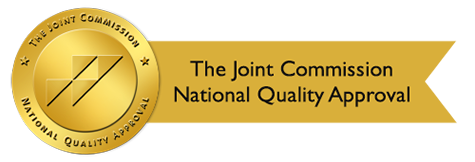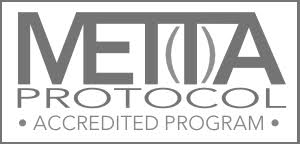Opioid addiction is a pressing concern worldwide. We see individuals grappling with dependencies on drugs like heroin, hydrocodone, codeine, and fentanyl. In this crisis, Medication-Assisted Treatment (MAT) emerges as an effective solution.
Merging pharmaceuticals with behavioral therapy, MAT is not just a treatment but a comprehensive strategy. It’s an evidence-based approach now considered the gold standard in addressing opioid addiction.
MAT has numerous benefits. Beyond reducing mortality rates by 25%, it guards against infectious diseases like hepatitis C and HIV, diminishes drug-related criminal activity by over half, and improves employment prospects.
As we navigate this blog, we’ll further dissect MAT’s efficacy, safety, and long-term outcomes. Dive in to understand why MAT is making waves in addiction treatment.
MAT Effectiveness in Opioid Addiction
Medication-Assisted Treatment has significantly transformed the landscape of addiction treatment over recent years. While the application of MAT extends to various substance use disorders, its efficacy in opioid addiction remains particularly noteworthy.
Overview of MAT Medications
Let’s begin by breaking down the medications utilized in MAT:
Methadone
A long-acting synthetic opioid agonist, methadone aids in suppressing withdrawal symptoms and cravings. Administered under a controlled setting, it helps patients reduce or eliminate the use of illicit opioids.
Buprenorphine-naloxone (Suboxone)
Suboxone combines two active ingredients. Buprenorphine is a partial opioid agonist that alleviates withdrawal symptoms, while naloxone acts as an opioid antagonist, reducing potential misuse.
Naltrexone
Unlike the former medications that act on opioid receptors, naltrexone blocks the euphoric and sedative effects of opioids. Available in oral form or as a monthly injection, it aids in relapse prevention once the individual is detoxified.
Success Rates and Factors Influencing Positive Outcomes
The success rates of MAT vary based on several factors, including patient adherence, the quality of accompanying behavioral therapy, social support, and the underlying causes of addiction. A holistic approach that recognizes the unique challenges faced by each individual and tailors treatment accordingly tends to yield the best outcomes.
While MAT has proven to be a promising solution in the battle against opioid addiction, its success is amplified when integrated into a broader care framework. This encompasses medication and therapy, community support, counseling, and addressing underlying socio-economic and psychological factors.
Safety Considerations in MAT
Ensuring that MAT is effective and safe requires a keen understanding of potential side effects, monitoring protocols, and specific considerations for unique patient populations.
If misused, MAT medications may lead to respiratory problems, constipation, fatigue, liver damage, depression, weight gain, or overdose.
Monitoring and Managing Potential Adverse Effects
Continuous monitoring is imperative when patients are on MAT. Here’s what you should do:
Regular Check-ins: Clinicians should maintain frequent appointments, especially during the initial phase of treatment, to adjust dosages and ensure that the patient is not experiencing adverse effects.
Laboratory Tests: Periodic liver function tests can help detect early signs of liver damage, especially for those on buprenorphine-naloxone or naltrexone.
Combination with Other Drugs: It’s vital to understand and monitor any other medications or substances the patient is consuming to prevent potential drug interactions or additive effects.
Safety Protocols for Specific Patient Populations
Pregnant Individuals: MAT can be a safer alternative to illicit opioid use during pregnancy but requires careful monitoring. Methadone treatment is commonly used, though buprenorphine is also considered safe. Regular prenatal check-ups and coordination with obstetric care are essential.
Co-occurring Disorders: A multidisciplinary approach is paramount for individuals with coexisting mental health disorders. Adjustments in MAT dosages, integrated mental health services, and frequent psychological assessments can help manage both conditions effectively.
While MAT offers a robust approach to opioid addiction, its administration should be enveloped in safety protocols. Through consistent monitoring, understanding individual patient needs, and fostering an environment of open communication, the efficacy of MAT can be maximized while ensuring patient safety.
Long-Term Outcomes of MAT
Medication-Assisted Treatment provides lasting help for those with opioid addiction. Let’s explore how MAT benefits people over time.
MAT Retention Rates and Patient Engagement
Retention in treatment is a strong predictor of positive outcomes in addiction recovery. MAT demonstrates higher retention rates compared to non-medicated approaches, indicating its effectiveness. Patients engaged in MAT tend to be more involved in their recovery process, benefiting from the treatment’s medicinal and behavioral components.
Assessing the Impact on Reducing Relapse and Overdose Risk
One of the paramount concerns with opioid addiction is the high potential for relapse and overdose. MAT has shown a substantial reduction in both these risks. By mitigating withdrawal symptoms and cravings, MAT reduces the inclination to relapse. This, in turn, significantly lowers the risk of overdose, providing a safer environment for recovery.
Evaluating the Overall Improvement in Quality of Life and Social Functioning
MAT improves patients’ well-being. Many see better relationships, job stability, and happiness. It empowers people to reintegrate into society, rebuild damaged relationships, and pursue fulfilling lives.
Medication-Assisted Treatment stands as a transformative approach in the realm of opioid addiction treatment. It offers immediate relief and long-term stability.
Using important medicines like methadone, suboxone, and naltrexone helps patients stay in treatment, lowers the chances of returning to drugs, and improves life.
Ready to plant the seeds of change? Join us at Roots Through Recovery and discover the transformative power of MAT in your recovery journey. Embrace a brighter, healthier future today!



